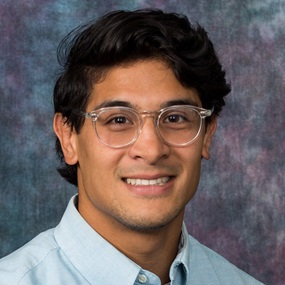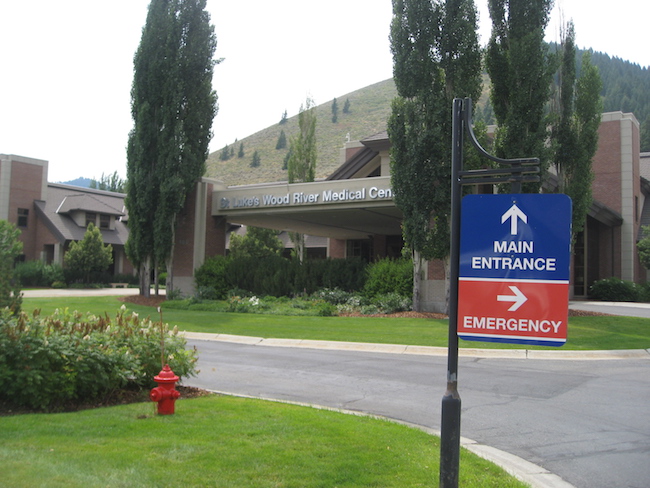Highlights Support Services, Advises To Seek Medical Care As Needed
By Monica Carrillo
Not too long ago, family medicine doctor, Peter Ferrara, said he had a patient stop-in the other day who has rheumatoid arthritis, which causes his joints to hurt every day.
However, when the patient was prescribed medicine for the pain, he never picked it up at the pharmacy because he was worried about the possibility of an expensive cost.
“I tried to express how important it was to use these meds in order so that he can work, because, you know, he’s worried about how he can’t work,” Ferrara said.
Acknowledging their large number of bilingual providers and payment assistance directories, new family medicine doctor at St. Luke’s, Ferrara encourages Hispanic residents in Blaine County to get check-ups, as he shares his experience serving as a primary doctor for many Hispanic community members through his work in Idaho and, most specifically, Jerome in the last few years.

Ferrara told the Wood River Weekly he started working in Idaho five years ago, working in Jerome for St. Luke’s, aiding to the large Hispanic community in the area.
Although he is not Hispanic, he grew up taking Spanish classes in high school and eventually took a few classes in college as well, helping him become a trusted doctor for many Spanish-speaking residents who might’ve not made an appointment in the past because of the language barrier.
I’ve worked hard to get a good accent, whether or not I have great grammar, so I can walk the walk and talk the talk a little,” he said.
After working in Jerome for five years, he transitioned to the Blaine County area and said that even though it’s not that far of a drive, he’s seen a few similarities and differences with both areas.
“The patients down in Jerome are mostly of Mexican, you know, heritage, and the patients that currently live in the Wood River Valley are of Peruvian heritage here, and both have similar needs in the sense that they’re underserved,” Ferrara said.
“But what the difference is, I think, in Jerome, is that many of the Mexican Americans are mainly, getting to be second and third generation Mexican Americans, and some speak more English, and their grandparents or parents don’t – Here, the majority of patients that I’ve seen so far in, you know, the months that I’ve been working here is that they’re newly arrived to the area.”
According to data from the Commission on Hispanic Affairs, Carey has the largest percentage of Hispanic residents proportional to its total population. As of 2021, 639 residents were white and 682 residents were Hispanic—51.6% of the population.
Hailey has 2,837 Hispanic residents making up 31.5% of the city’s population, while Bellevue has 774 Hispanic residents, making up 30.9% of the population.
And with the Hispanic community only continuing to grow, he encourages residents to confide in their clinics for assistance or for help.
“There are a good amount of [spanish providers], and they’ve been taking good care of this community before I arrived,” Ferrara said. “I’m amazed and appreciative that there are a lot of nursing staff and secretarial staff, front office staff that speak Spanish, and they play a huge role in helping the patients get in to see the provider that they need.”
One of the ways St. Luke’s Wood River works to address these determinants is through its Center for Community Health (CCH), located in the Hailey Clinic.
The center serves the community through bilingual, comprehensive and coordinated health and wellness prevention services, including health promotion and education, health screenings, information and referral to local and regional health and social services, access to insurance and health care, emergency financial assistance, support groups, parent and family education, and community action.
Individuals with limited or no resources seek assistance in a variety of ways including financial assistance for medical care, mental health services, prescriptions, transportation, rent, food and more.
Additionally, CCH partners with St. Luke’s clinical providers by referring to their services, being a
resource to their patients who need additional support, promoting their expertise through our education programs and screenings, and providing office space for them to deliver services out of the center.
Ferrara told the Wood River Weekly that right after he heard of his patient with rheumatoid arthritis, he referred him to CCH to help him with his financial concerns and hopes he and St. Luke’s can help others in the same way.
“You know, that can be scary to fill out paperwork that has all your information if you’re not a citizen,” Ferrara said.
“So if you could relay that information to the Community Center for Health and Wellness, you know, they’re going to take some of your information, and it’s private health information. We don’t give that stuff away.”



